Young Boo Kwon
age ~61
from Tracy, CA
- Also known as:
-
- Young B Kwon
- Youngboo Kwon
- Young K Won
- Kwon Young Boo
- Boo Kwon Young
- Kwon B Young
- Kwon Youngboo
- Phone and address:
- 714 Grizzly Ct, Tracy, CA 95304
Young Kwon Phones & Addresses
- 714 Grizzly Ct, Tracy, CA 95304
- Lathrop, CA
- Salt Lake City, UT
- San Jose, CA
- Munster, IN
- San Joaquin, CA
Lawyers & Attorneys

Young Sang Kwon - Lawyer
view sourceAddress:
Johnson & Johnson Medical Korea Ltd.
220943964x (Office)
220943964x (Office)
Licenses:
New York - Currently registered 1998
Education:
Syracuse University College

Young Huhn Kwon - Lawyer
view sourceLicenses:
New York - Currently registered 1987

Young Sang Kwon - Lawyer
view sourceLicenses:
New Jersey - Active 1997

Young Kwon - Lawyer
view sourceSpecialties:
Litigation
International Law
International Law
ISLN:
915964336
Admitted:
1999
Law School:
Whittier College School of Law, J.D.
Isbn (Books And Publications)

Multiscale Modeling and Simulation of Composite Materials and Structures
view sourceAuthor
Young W. Kwon
ISBN #
0387363181



Recent Advances in Structural Mechanics/H00731: Presented at the Winter Annual Meeting of the American Society of Mechanical Engineers, Atlanta, Georgia, December 1-6, 1991
view sourceAuthor
Young W. Kwon
ISBN #
0791808998

Active and Passive Control of Mechanical Vibration Pvp-Vol. 289: Presented at 1994 International Mechanical Engineering Congress and Exposition
view sourceAuthor
Young W. Kwon
ISBN #
0791813878

Recent Advances in Structural Mechanics, 1994: Presented at 1994 International Mechanical Engineering Congress and Exposition, Chicago, Illinois, November 6-11, 1994
view sourceAuthor
Young W. Kwon
ISBN #
0791814505


Recent Advances in Solids and Structures: 1999 International Mechanical Engineering Congress and Exposition, Nashville, Tennessee, November 14-18, 1999
view sourceAuthor
Young W. Kwon
ISBN #
0791816443
Name / Title
Company / Classification
Phones & Addresses
General Partner
Mikado Restaurant
Intec Group
Restaurants
Intec Group
Restaurants
10395 S State St, Sandy, UT 84070
8013280929, 8014561311
8013280929, 8014561311
Owner
Oriental Professional Building Maintenance
Bldng Maint Svcnec
Bldng Maint Svcnec
21619 Foothill Blvd, Hayward, CA 94541
5108811520
5108811520
Owner
Foremost Cleaners
Drycleaning Plant
Drycleaning Plant
3932 N Sheridan Rd, Chicago, IL 60613
President
Pronto Cleaners Inc
Drycleaning Plant
Drycleaning Plant
2235 S Michigan Ave, Chicago, IL 60616
3123289999
3123289999
Director, Secretary
Bic Technologies Group Inc
67 W 100 S, Salt Lake City, UT 84101
520 S Kingsley Dr, Los Angeles, CA 90020
520 S Kingsley Dr, Los Angeles, CA 90020
General Partner
Mikado Restaurant
Restaurants
Restaurants
10395 S State St, Sandy, UT 84070
8013280929, 8014561311
8013280929, 8014561311
Pastor
Munster Korean Church
Religious Organization
Religious Organization
8001 Euclid Ave, Hammond, IN 46321
2198363151, 2198363154
2198363151, 2198363154
Chief Executive Officer
De Young Flowers
Florists
Florists
1616 W Campbell Ave, Campbell, CA 95008
4083781580, 4083774679
4083781580, 4083774679
Us Patents
-
Compact Thermoacoustic Array Energy Converter
view source -
US Patent:8004156, Aug 23, 2011
-
Filed:Jan 23, 2008
-
Appl. No.:12/018762
-
Inventors:Orest G. Symko - Salt Lake City UT, US
Young S. Kwon - Salt Lake City UT, US -
Assignee:University of Utah Research Foundation - Salt Lake City UT
-
International Classification:H02N 2/18
-
US Classification:310339, 310328, 310334, 322 2 R
-
Abstract:A thermoacoustic array energy converter consists of heat driven thermoacoustic prime movers in parallel coupled by means of an acoustic cavity to a piezoelectric electrical generator whose output is rectified and fed to an energy storage element. The prime movers convert heat to sound in a resonator. The sound form a phase-locked array is converted to electricity by means of the piezoelectric element. The generated electric energy is converted to DC by means of a rectifier set and it is then stored in a battery or supercapacitor. The generated electric energy can also be converted to power line frequency.
-
Compact Thermoacoustic Array Energy Converter
view source -
US Patent:8143767, Mar 27, 2012
-
Filed:Jul 15, 2011
-
Appl. No.:13/183927
-
Inventors:Orest G. Symko - Salt Lake City UT, US
Young S. Kwon - Salt Lake City UT, US -
Assignee:University of Utah Research Foundation - Salt Lake City UT
-
International Classification:H02N 2/18
-
US Classification:310339, 310334
-
Abstract:A thermoacoustic array energy converter consists of heat driven thermoacoustic prime movers in parallel coupled by means of an acoustic cavity to a piezoelectric electrical generator whose output is rectified and fed to an energy storage element. The prime movers convert heat to sound in a resonator. The sound form a phase-locked array is converted to electricity by means of the piezoelectric element. The generated electric energy is converted to DC by means of a rectifier set and it is then stored in a battery or supercapacitor. The generated electric energy can also be converted to power line frequency.
-
System And Method For Iteration Scheduling In Joint Equalization And Turbo Decoding
view source -
US Patent:20120051470, Mar 1, 2012
-
Filed:Aug 27, 2010
-
Appl. No.:12/870338
-
Inventors:Christian Schlegel - Park City UT, US
Yajun Kou - San Diego CA, US
Tao Wu - Carlsbad CA, US
Young Hoon Kwon - San Diego CA, US -
Assignee:FutureWei Technologies, Inc. - Plano TX
-
International Classification:H04B 1/10
-
US Classification:375341
-
Abstract:A system and method for iteration scheduling in joint equalization and turbo decoding are provided. A method for processing received information includes cancelling interference in a received signal bearing received information, decoding the interference cancelled received signal to produce information, and processing the received information. The cancelling comprises an iterative processing of the received signal based on soft information produced by a decoding the received signal.
-
System And Method For Signaling And Detecting In Wireless Communications Systems
view source -
US Patent:20120147942, Jun 14, 2012
-
Filed:Dec 10, 2010
-
Appl. No.:12/965568
-
Inventors:Christian Schlegel - Park City UT, US
Tao Wu - Carlsbad CA, US
Yajun Kou - San Diego CA, US
Young Hoon Kwon - San Diego CA, US -
Assignee:FutureWei Technologies, Inc. - Plano TX
-
International Classification:H04L 27/06
H04L 27/01 -
US Classification:375229, 375340, 375341
-
Abstract:A system and method for signaling and detecting in wireless communications systems are provided. A method for processing information includes operating in a first phase, and operating in a second phase in response to determining that a first user is transmitting at a substantially higher power level than a second user, and processing the detected information. The first phase includes iteratively inverting a first filtering operation on received signals, and the second phase includes iteratively inverting a second filtering operation on received signals with consideration given to a first estimation error of symbols of the first user and a second estimation error of symbols of the second user. The operating remains in the first phase in response to determining that the first user is not transmitting at a substantially higher power level than the second user.
-
Integrated Circuit Package Design Having An Intermediate Die-Attach Substrate Bonded To A Leadframe
view source -
US Patent:53654099, Nov 15, 1994
-
Filed:Jun 4, 1993
-
Appl. No.:8/071921
-
Inventors:Young I. Kwon - San Jose CA
Louis H. Liang - Los Altos CA -
Assignee:VLSI Technology, Inc. - San Jose CA
-
International Classification:H05K 502
-
US Classification:361813
-
Abstract:A package design configuration for an integrated-circuit die includes a leadframe having its bonding fingers connected to the periphery of an electrically-insulated, heat-conductive substrate, formed, for example, of a ceramic material. A number of electrically conductive traces, or bonding islands, serve as intermediate bonding locations for shorter bonding wires connecting bonding pads on the integrated-circuit die to the bonding fingers of the leadframe. The conductive traces serving as bonding islands are formed by deposition of thin-film material using semiconductor fabrication techniques or by deposition of thick-film material using printing techniques. Various shapes and configurations of the conductive traces are available, such as elongated rectangular patterns, or zigzag patterns. Alternatively, the electrically-insulated, heat-conductive ceramic substrate is attached to the die-attach pad of a conventional leadframe.
-
Thermally Enhanced Leadframe
view source -
US Patent:51463105, Sep 8, 1992
-
Filed:Jul 18, 1991
-
Appl. No.:7/731970
-
Inventors:Jaime A. Bayan - Palo Alto CA
Jeffrey C. Demmin - Palo Alto CA
Mark L. DiOrio - Cupertino CA
Young I. Kwon - Santa Clara CA -
Assignee:National Semiconductor Corp. - Santa Clara CA
-
International Classification:H01L 2334
H01L 2336
H01L 2312 -
US Classification:357 70
-
Abstract:A thermally enhanced leadframe having heat conductive paths which thermally couple a die attach pad to thermal connection points spread out as far as possible from each other on the perimeter of the package. The area of the heat conductive path is maximized to occupy substantially all area in the package not occupied by the electrically conductive paths between the wire bond locations and the external connection points such as pins. This configuration maximizes the area of the printed circuit board which is heated thereby increasing thermal cooling efficiency. Further, the leadframe configuration maximizes the area of contact between the integrated circuit package and the heat conductive path thereby increasing the thermal conductivity between the device junctions on the integrated circuit die and the ambient through the material of the package itself.
-
Zirconium And Hafnium With Low Oxygen And Iron
view source -
US Patent:47228270, Feb 2, 1988
-
Filed:Sep 26, 1985
-
Appl. No.:6/780343
-
Inventors:Young J. Kwon - Fruit Heights UT
-
Assignee:Westinghouse Electric Corp. - Pittsburgh PA
-
International Classification:C22C 1600
-
US Classification:420422
-
Abstract:This is a high quality zirconium or hafnium sponge, a fuel element cladding liner having material of the quality of this sponge and a process utilizing this quality sponge to fabricate liner material for lined fuel element cladding. The sponge contains 250-about 350 ppm of oxygen impurity, 50-300 ppm of iron impurity, and a total of 500-1,000 ppm of impurity. This material is much purer than conventional sponge and approaches the quality of crystal bar.
-
Vertically Stackable Integrated Circuit
view source -
US Patent:60930292, Jul 25, 2000
-
Filed:Sep 8, 1998
-
Appl. No.:9/149549
-
Inventors:Young Kwon - San Jose CA
Jon Ewanich - Los Altos CA
Bill Gervasi - Los Gatos CA
Paul Franklin - Santa Cruz CA -
Assignee:S3 Incorporated - Santa Clara CA
-
International Classification:H01R 1200
-
US Classification:439 69
-
Abstract:An arrangement for coupling a first packaged integrated circuit to a second packaged integrated circuit comprises a first packaged integrated circuit that includes a first set of electrical interconnection elements arranged on a first surface and a second set of electrical interconnection elements arranged on a second surface which is opposite to the first side. A thermally conductive material is disposed on the second surface and the second set of electrical interconnection elements are arranged around at least a portion of the periphery of the second surface. A second packaged integrated circuit includes a third set of electrical interconnection elements arranged on a first surface of the second packaged integrated circuit. The third set of electrical interconnection elements are shaped to mechanically and electrically couple and decouple to or from the second set of electrical interconnection elements non-destructively by application of manual force.
License Records
Young J Kwon
License #:
03644 - Expired
Category:
Accountants
Issued Date:
Dec 1, 2005
Expiration Date:
Jun 30, 2009
Type:
Certified Public Accountant
Young J Kwon
License #:
03644 - Expired
Category:
Accountants
Issued Date:
Dec 1, 2005
Expiration Date:
Jun 30, 2009
Type:
Certified Public Accountant
Vehicle Records
-
Young Kwon
view source -
Address:2665 E Parleys Way APT 310, Salt Lake City, UT 84109
-
Phone:8012960612
-
VIN:WBAPT73598CX00175
-
Make:BMW
-
Model:5 SERIES
-
Year:2008
Medicine Doctors

Young W. Kwon
view sourceSpecialties:
Orthopaedic Surgery, Orthopedic Sports Medicine
Work:
NYU Langone Center For Musculoskeletal Care Sports Practice
333 E 38 St FL 4, New York, NY 10016
6465017223 (phone), 6467549505 (fax)
Center For Musculoskeletal & Sports Medicine
333 E 38 St FL 4, New York, NY 10016
2125986355 (phone), 6465017234 (fax)
333 E 38 St FL 4, New York, NY 10016
6465017223 (phone), 6467549505 (fax)
Center For Musculoskeletal & Sports Medicine
333 E 38 St FL 4, New York, NY 10016
2125986355 (phone), 6465017234 (fax)
Education:
Medical School
Northwestern University Feinberg School of Medicine
Graduated: 1997
Northwestern University Feinberg School of Medicine
Graduated: 1997
Procedures:
Occupational Therapy Evaluation
Shoulder Arthroscopy
Shoulder Surgery
Arthrocentesis
Joint Arthroscopy
Knee Replacement
Shoulder Arthroscopy
Shoulder Surgery
Arthrocentesis
Joint Arthroscopy
Knee Replacement
Conditions:
Fractures, Dislocations, Derangement, and Sprains
Lateral Epicondylitis
Rotator Cuff Syndrome and Allied Disorders
Internal Derangement of Knee Cartilage
Intervertebral Disc Degeneration
Lateral Epicondylitis
Rotator Cuff Syndrome and Allied Disorders
Internal Derangement of Knee Cartilage
Intervertebral Disc Degeneration
Languages:
English
Spanish
Spanish
Description:
Dr. Kwon graduated from the Northwestern University Feinberg School of Medicine in 1997. He works in New York, NY and 1 other location and specializes in Orthopaedic Surgery and Orthopedic Sports Medicine. Dr. Kwon is affiliated with NYU Hospital For Joint Diseases and NYU Langone Medical Center.

Young Sei Kwon
view sourceSpecialties:
Physical Medicine & Rehabilitation
Orthopaedic Surgery
Surgery
Orthopaedic Surgery
Surgery
Education:
Catholic University Of Korea (1960)
Plaxo

Young Sang Kwon
view sourceLegal Counsel at LINA Korea Past: Attorney at Kim & Chang

Young Kwon
view sourceFour Seasons Dental Studio

young Kwon
view sourceSouth JerseyAuditor at General Services Administration

Young Min Kwon
view sourceAssociate Professor at University of Arkansas
Classmates

Young Woo Kwon
view sourceSchools:
Central Elementary School East Brunswick NJ 1987-1989, East Brunswick High School East Brunswick NJ 1993-1996
Community:
Debbie Vine, Susan Gross, Thomas Anderson

Young Kwon
view sourceSchools:
River Hill High School Clarksville MD 1999-2003

Young Kwon (Lim)
view sourceSchools:
University of Colorado - Boulder Boulder CO 1997-2001
Community:
Esther Acosta, Gregg Jones

Young Kwon
view sourceSchools:
Spring Forest Middle School Houston TX 1993-1996
Community:
Robert Miller, Stephanie Jones, Teresa Lambert, Thomas Stevens, Todd Geyer

Winands Elementary School...
view sourceGraduates:
Craig Schoenfeld (1966-1972),
Jennifer Jacovsky (1985-1990),
Rachel King (1986-1988),
Youn Young Kwon (1992-1993),
George Bowden (1975-1982)
Jennifer Jacovsky (1985-1990),
Rachel King (1986-1988),
Youn Young Kwon (1992-1993),
George Bowden (1975-1982)

Baker Middle School, Taco...
view sourceGraduates:
Dai Young Kwon (1982-1985),
Kosal Song (1989-1991),
Scott Richardson (1993-1995),
Scott Reynolds (1987-1988),
Janine Carbaugh (1987-1988)
Kosal Song (1989-1991),
Scott Richardson (1993-1995),
Scott Reynolds (1987-1988),
Janine Carbaugh (1987-1988)

Harper's Choice Middle Sc...
view sourceGraduates:
Melissa Counts (1967-1971),
Brian Feeheley (1993-1994),
James Young (2000-2004),
Susi Gardner (1977-1980),
Youn Young Kwon (1994-1996)
Brian Feeheley (1993-1994),
James Young (2000-2004),
Susi Gardner (1977-1980),
Youn Young Kwon (1994-1996)

Young Deuk Kwon
view source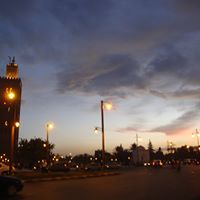
Young Kyun Kwon
view source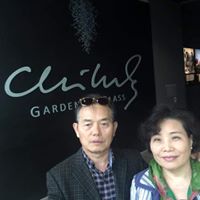
Young Sook Kwon
view source
Young Seong Kwon
view source
Young Hyeon Kwon
view source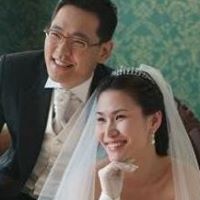
Young Kwan Kwon
view source
Young Deuk Kwon
view source
Young Sung Kwon
view sourceGoogleplus
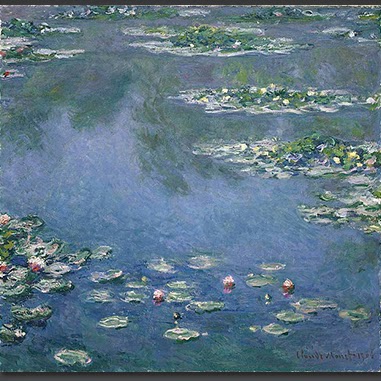
Young Kwon

Young Kwon
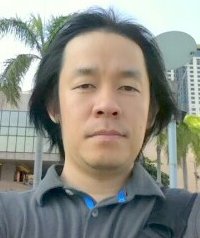
Young Kwon

Young Kwon

Young Kwon

Young Kwon

Young Kwon
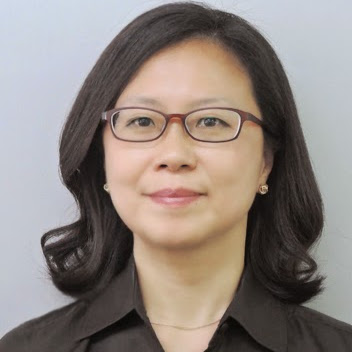
Young Kwon
Youtube
Myspace
Flickr
Get Report for Young Boo Kwon from Tracy, CA, age ~61













